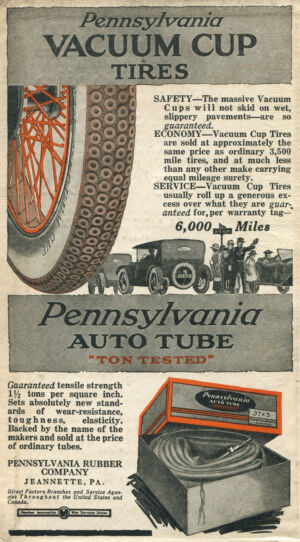Queer-friendly data on car crash deaths removed from NHTSA website
Potential road hazard ahead
Trump targeting car crash data sparks concerns over datasets collected since 1975.
Credit: Aurich Lawson | Getty Images
In early February, a dataset tracking car crash deaths in the US curiously went missing from the National Highway Traffic Safety Administration (NHTSA) website.
Unlike other Donald Trump-ordered changes to government websites in which entire studies were removed and later court-ordered to be restored, only the most recent data on car crash deaths from 2022 was deleted from download files on NHTSA’s website.
The odd removal sparked concerns that the Trump administration may be changing or possibly even ending the Fatality Analysis Reporting System (FARS)—a collection of police-reported data from every state that has tracked car crash fatalities since 1975. The Health department has said the data is used to help reduce deaths from not wearing a seatbelt or deaths involving a drunk driver.
NHTSA did not respond to multiple requests for comment. But the agency eventually provided a vague response to Advocates for Highway and Auto Safety, an organization that advises lawmakers and bills itself as a “unique partnership of insurers, law enforcement, public health, and consumer experts working together to make America’s roads safer.”
“The file was taken down for some minor corrections and should be back up by the end of this week,” NHTSA told Advocates without any further explanation of what fixes were needed.
Ars spoke to several safety organizations and auto industry analysts who depend on FARS data to analyze trends, including efforts to flag the most dangerous cars in America.
A rumor began circulating that the 2022 data was yanked because NHTSA began allowing “other” sexes to be monitored in FARS data starting with that report. It was expected that NHTSA pulled the data down to comply with a Trump executive order “defending women” by banning government “efforts to eradicate the biological reality of sex.”
To get to the bottom of the rumors, Ars consulted an archived version of the FARS downloads page, which showed that the 2022 dataset was available as recently as January 30. The uncensored data showed that unlike prior years, 22 car crash victims were documented using a category in 2022 for sex that had never been tracked previously, “Other (e.g., “X”, Non-Binary, Not Specified, etc.).”
NHTSA has not directly confirmed if the dataset is being changed to remove this data or if other “minor corrections” were needed. More will be revealed once the dataset comes back online, supposedly within the next few days.
Karl Brauer, an executive analyst for iSeeCars.com, which offers a car search engine and uses FARS data to help buyers steer clear of the “most dangerous” vehicles on US roads, told Ars that NHTSA’s public silence on the missing data means industry stakeholders don’t really know right now how FARS data might be changing.
“We can only speculate regarding NHTSA curtailing access to FARS data, but it’s disappointing given FARS’ value as a reference point for vehicle safety,” Brauer said. “Hopefully, this is a temporary situation that will be resolved shortly and not an indication that NHTSA no longer plans to compile this data. Consumers should be able to review all aspects of a vehicle’s safety, including how many fatalities it has been involved in.”
Trump targeting car crash data
Among the most dangerous cars on the road last year, iSeeCars flagged the Hyundai Venue, Chevrolet Corvette, Mitsubishi Mirage, Porsche 911, and Honda CR-V Hybrid as the “top five most dangerous cars.” Those cars had “fatal accident rates nearly five times higher than the average vehicle” from 2018 to 2022, their report said.
And “despite Tesla’s advanced driver-assist technology,” the Model Y and Model S both made the list, too, with Tesla maintaining “the highest fatal accident rate by brand.”
Back in December, when Trump was preparing to take office, a document seen by Reuters reportedly showed that his transition team was angling to “drop a car-crash reporting requirement opposed by Elon Musk’s Tesla.”
This car crash data, which is compiled due to a mandatory reporting requirement from carmakers, is different from FARS data, which comes from police reports. But a source told Reuters that Musk maintains that the mandatory reporting rule is “unfair” to Tesla because Musk “believes” Tesla reports “better data” than other car brands. That “makes it look like Tesla is responsible for an outsized number of crashes involving advanced driver-assistance systems,” the source told Reuters.
Trump reportedly tasked his transition team with coming up with a 100-day strategy to kill off the reporting requirement. That move seemingly would make FARS data even more important to safety organizations and government officials that would otherwise lose data that helps track vehicle safety concerns, particularly with innovative automated-driving systems.
The University of Michigan’s Transportation Research Institute houses the Center for the Management of Information for Safe and Sustainable Transportation (CMISST), which also regularly analyzes car crash data. A CMISST spokesperson told Ars that NHTSA has also removed Crash Report Sampling System (CRSS) data from 2022. Even temporary removals make it harder for outside researchers to get a clear picture of road safety, the spokesperson told Ars.
“These datasets are world-leading in their scale and completeness, with FARS a complete census of fatal crashes involving someone who died within 30 days as a result of a crash on public roads,” CMISST’s spokesperson said. “CRSS is in some ways even more world-leading because it is a well-designed complex probability survey of police-reported crashes across the US, which allows us to have nationally representative estimates of the incidence of such crashes, including many key characteristics of the circumstances, the vehicles, and the people involved.”
Joseph Young, director of media relations for the Insurance Institute for Highway Safety (IIHS), told Ars that, like many others, his organization had “previously downloaded the dataset and continues to use it for analysis, so this removal doesn’t cause any immediate issues for our team.” But Young agreed that “it does complicate others’ ability to access the full dataset.”
Currently, the official FARS query tool still shows 2022 data, Young noted, but an Ars review confirmed that the tracking of “other” sexes is not available through that interface. So the only way to see changes once NHTSA uploads the new file will be to consult the archived dataset.
FARS saves lives, experts say
FARS data is released as soon as it’s available to try to prevent as many vehicle fatalities as possible. The version of the 2022 data that is missing from NHTSA’s site today is not the final draft, which is expected to be published in the spring. Around the same time, the first draft of the 2023 data should be available, CMISST’s spokesperson told Ars, as long as the Trump administration doesn’t de-prioritize sharing the data. Young told Ars that IIHS’ “bigger concern” than the missing 2022 data is whether there will be delays in posting new data.
“The latest FARS data is used extensively for research purposes and also for informing the public and decision makers about important trends in traffic safety, so it’s important that it be available as soon as possible,” Young told Ars.
Peter Kurdock, general counsel for Advocates for Highway and Auto Safety, told Ars that the key government datasets that his organization relies on to monitor highway safety do not currently appear to be at risk. But those reports are frequently updated, and any potential delays could make it harder to answer granular data-driven questions like “What type of pedestrians are being hit?” or “What time of day are they being hit?”
“All that stuff’s very important to the policy we develop, and we have to answer questions from policymakers as well,” Kurdock told Ars.
Advocates’ senior research director, Shaun Kildare, added that carmakers shouldn’t want this dataset to be messed with any more than outside safety researchers, because otherwise they would have to rely on spotty customer reports to monitor issues with their vehicles.
“In the past 50 years, [there were] 860,000 lives saved [and] nearly 50 million people that avoided injury,” Kildare said, citing NHTSA data. “I think the overall benefits [of collecting FARS and other crash data to set Federal Motor Vehicle Safety Standards] were somewhere in the $17 trillion range in terms of benefits and cost savings to the US,” he added.
A CMISST spokesperson told Ars that there remains a critical need to closely track car crash fatalities, which, despite safety stakeholders’ best efforts, reportedly continue to rise in the US.
“Given that fatalities have been going in the wrong direction over the last approximately 15 years, these data are critical to knowing where we are at with fatal (and non-fatal) crashes and which groups of crashes (e.g., pedestrians at night) are particularly on the rise,” CMISST’s spokesperson said.
Queer-friendly data on car crash deaths removed from NHTSA website Read More »




